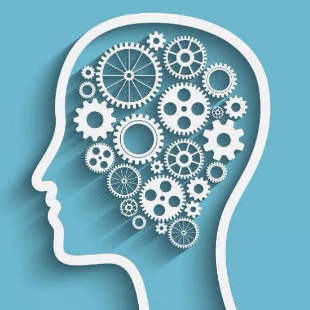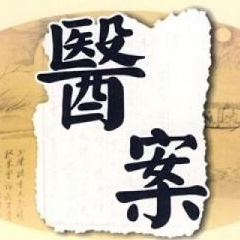Meditation changes temperatures
Mind controls body in extreme experiments
冥想改变温度
在极限实验中心灵控制身体
BY William J. Cromie
Gazette Staff
DATEApril 18, 2002
Buddhist monk meditating
A Buddhist monk has his vital signs measured as he prepares to enter an advanced state of meditation in Normandy, France. During meditation, the monk’s body produces enough heat to dry cold, wet sheets put over his shoulders in a frigid room (Photo courtesy of Herbert Benson).
In a monastery in northern India, thinly clad Tibetan monks sat quietly in a room where the temperature was a chilly 40 degrees Fahrenheit. Using a yoga technique known as g Tum-mo, they entered a state of deep meditation. Other monks soaked 3-by-6-foot sheets in cold water (49 degrees) and placed them over the meditators’ shoulders. For untrained people, such frigid wrappings would produce uncontrolled shivering.
If body temperatures continue to drop under these conditions, death can result. But it was not long before steam began rising from the sheets. As a result of body heat produced by the monks during meditation, the sheets dried in about an hour.
Attendants removed the sheets, then covered the meditators with a second chilled, wet wrapping. Each monk was required to dry three sheets over a period of several hours.
Why would anyone do this? Herbert Benson, who has been studying g Tum-mo for 20 years, answers that “Buddhists feel the reality we live in is not the ultimate one. There’s another reality we can tap into that’s unaffected by our emotions, by our everyday world. Buddhists believe this state of mind can be achieved by doing good for others and by meditation. The heat they generate during the process is just a by-product of g Tum-mo meditation.”
Benson is an associate professor of medicine at the Harvard Medical School and president of the Mind/Body Medical Institute at Beth Israel Deaconess Medical Center in Boston. He firmly believes that studying advanced forms of meditation “can uncover capacities that will help us to better treat stress-related illnesses.”
Benson developed the “relaxation response,” which he describes as “a physiological state opposite to stress.” It is characterized by decreases in metabolism, breathing rate, heart rate, and blood pressure. He and others have amassed evidence that it can help those suffering from illnesses caused or exacerbated by stress. Benson and colleagues use it to treat anxiety, mild and moderate depression, high blood pressure, heartbeat irregularities, excessive anger, insomnia, and even infertility. His team also uses this type of simple meditation to calm those who have been traumatized by the deaths of others, or by diagnoses of cancer or other painful, life-threatening illnesses.
“More than 60 percent of visits to physicians in the United States are due to stress-related problems, most of which are poorly treated by drugs, surgery, or other medical procedures,” Benson maintains.
The Mind/Body Medical Institute is now training people to use the relaxation response to help people working at Ground Zero in New York City, where two airplanes toppled the World Trade Center Towers last Sept. 11. Facilities have been set up at nearby St. Paul’s Chapel to aid people still working on clearing wreckage and bodies. Anyone else who feels stressed by those terrible events can also obtain help at the chapel. “We are training the trainers who work there,” Benson says.
The relaxation response involves repeating a word, sound, phrase, or short prayer while disregarding intrusive thoughts. “If such an easy-to-master practice can bring about the remarkable changes we observe,” Benson notes. “I want to investigate what advanced forms of meditation can do to help the mind control physical processes once thought to be uncontrollable.”
BREATHTAKING RESULTS
Some Westerners practice g Tum-mo, but it often takes years to reach states like those achieved by Buddhist monks. In trying to find groups he could study, Benson met Westerners who claimed to have mastered such advanced techniques, but who were, in his words, “fraudulent.”
Benson decided that he needed to locate a religious setting, where advanced mediation is traditionally practiced. His opportunity came in 1979 when the Dalai Lama, spiritual leader of Tibet, visited Harvard University. “His Holiness agreed to help me,” recalls Benson. That visit was the beginning of a long friendship and several expeditions to northern India where many Tibetan monks live in exile.
During visits to remote monasteries in the 1980s, Benson and his team studied monks living in the Himalayan Mountains who could, by g Tum-mo meditation, raise the temperatures of their fingers and toes by as much as 17 degrees. It has yet to be determined how the monks are able to generate such heat.
The researchers also made measurements on practitioners of other forms of advanced meditation in Sikkim, India. They were astonished to find that these monks could lower their metabolism by 64 percent. “It was an astounding, breathtaking [no pun intended] result,” Benson exclaims.
To put that decrease in perspective, metabolism, or oxygen consumption, drops only 10-15 percent in sleep and about 17 percent during simple meditation. Benson believes that such a capability could be useful for space travel. Travelers might use meditation to ease stress and oxygen consumption on long flights to other planets.
In 1985, the meditation team made a video of monks drying cold, wet sheets with body heat. They also documented monks spending a winter night on a rocky ledge 15,000 feet high in the Himalayas. The sleep-out took place in February on the night of the winter full moon when temperatures reached zero degrees F. Wearing only woolen or cotton shawls, the monks promptly fell asleep on the rocky ledge, They did not huddle together and the video shows no evidence of shivering. They slept until dawn then walked back to their monastery.
OVERCOMING OBSTACLES
Working in isolated monasteries in the foothills of the Himalayas proved extremely difficult. Some religious leaders keep their meditative procedures a closely guarded secret. Medical measuring devices require electrical power and wall outlets are not always available. In addition, trying to meditate while strangers attempt to measure your rectal temperature is not something most monks are happy to do.
To avoid these problems, Instructor in Psychology Sara Lazar, a Benson colleague, used functional magnetic resonance imaging to scan the brains of meditators at Massachusetts General Hospital in Boston. The subjects were males, aged 22-45, who had practiced a form of advanced mediation called Kundalini daily for at least four years. In these experiments, the obstacles of cold and isolation were replaced by the difficulties of trying to meditate in a cramped, noisy machine. However, the results, published in the May 15, 2000, issue of the journal NeuroReport, turned out to be significant.
Herbert Benson Herbert Benson, who developed a simple relaxation technique to reduce stress, enjoys a quiet moment at a placid stream near his office in Boston. He directs a study of advanced meditation to uncover capabilities that may help treat stress-related illnesses. (Staff photo by Kris Snibbe)
“Lazar found a marked decrease in blood flow to the entire brain,” Benson explains. “At the same time, certain areas of the brain became more active, specifically those that control attention and autonomic functions like blood pressure and metabolism. In short, she showed the value of using this method to record changes in the brain’s activity during meditation.”
The biggest obstruction in further studies, whether in India or Boston, has always been money. Research proceeded slowly and intermittently until February 2001, when Benson’s team received a $1.25 million grant from Loel Guinness, via the beer magnate’s Kalpa Foundation, established to study extraordinary human capacities.
The funds enabled researchers to bring three monks experienced in g Tum-mo to a Guinness estate in Normandy, France, last July. The monks then practiced for 100 days to reach their full meditative capacity. An eye infection sidelined one of the monks, but the other two proved able to dry frigid, wet sheets while wearing sensors that recorded changes in heat production and metabolism.
Although the team obtained valuable data, Benson concludes that “the room was not cold enough to do the tests properly.” His team will try again this coming winter with six monks. They will start practice in late summer and should be ready during the coldest part of winter.
Benson feels sure these attempts to understand advanced mediation will lead to better treatments for stress-related illnesses. “My hope,” he says, “is that self-care will stand equal with medical drugs, surgery, and other therapies that are now used to alleviate mental and physical suffering. Along with nutrition and exercise, mind/body approaches can be part of self-care practices that could save millions of dollars annually in medical costs.”
冥想改变温度
在极限实验中心灵控制身体
作者:William J.Cromie
公报工作人员
日期:2002年4月18日
禅师冥想
在法国诺曼底,一名僧侣在准备进入高级冥想状态时测量了他的生命体征。在冥想过程中,僧侣的身体产生足够的热量,使他在寒冷的房间里晾干肩上湿冷的被单(照片由赫伯特·本森提供)。
在印度北部的一座寺院里,衣着单薄的西藏僧侣安静地坐在一个温度为华氏40度的寒冷房间里。使用一种被称为g Tum mo的瑜伽技巧,他们进入了深度冥想的状态。其他僧侣将3×6英尺长的被单浸泡在冷水(49度)中,并将其放在冥想者的肩膀上。对于未经训练的人来说,这种寒冷的包裹会产生无法控制的颤抖。
如果在这种情况下体温继续下降,可能会导致死亡。但不久之后,蒸汽开始从床单上升起。由于僧侣们在冥想时产生的体温,床单在大约一小时内就干了。
服务员取下床单,然后用另一个冷冻的湿包装纸盖住冥想者。要求每个僧侣在几个小时内晾干三张被单。
为什么会有人这样做?赫伯特·本森(Herbert Benson)已经研究格图姆(g Tum mo)20年了,回答是:“佛教徒觉得我们生活的现实并不是终极的现实。我们可以利用另一个不受我们的情绪和日常世界影响的现实。佛教徒相信这种心态可以通过帮助他人和冥想来实现。他们在这个过程中产生的热量只是冥想的副产品。”
本森是哈佛医学院医学副教授,波士顿贝斯以色列女执事医学中心身心医学研究所所长。他坚信,研究冥想的高级形式“可以发现帮助我们更好地治疗压力相关疾病的能力。”
本森开发了“放松反应”,他将其描述为“与压力相反的生理状态”。其特征是新陈代谢、呼吸频率、心率和血压下降。他和其他人已经积累了证据,证明它可以帮助那些患有由压力引起或加剧的疾病的人。Benson和同事们用它来治疗焦虑、轻度和中度抑郁症、高血压、心跳不规则、过度愤怒、失眠,甚至不孕症。他的团队还利用这种简单的冥想来安抚那些因他人死亡、癌症或其他痛苦、威胁生命的疾病而受到创伤的人。
本森坚持说:“在美国,超过60%的医生就诊是由于与压力有关的问题,其中大多数都没有通过药物、手术或其他医疗程序得到很好的治疗。”。
身心医学研究所目前正在培训人们使用放松反应来帮助在纽约市世贸中心遗址工作的人们。去年9月11日,两架飞机在世贸中心大楼倒塌。附近的圣保罗教堂已经建立了设施,以帮助仍在清理废墟和尸体的人们。任何其他因这些可怕事件感到压力的人也可以在教堂获得帮助。“我们正在培训在那里工作的培训师,”本森说。
放松反应包括重复一个单词、声音、短语或简短的祈祷,同时忽略干扰性的想法。“如果这样一个易于掌握的练习能够带来我们观察到的显著变化,”本森指出。“我想研究一下高级冥想可以做些什么来帮助大脑控制曾经被认为无法控制的物理过程。”
惊人的结果
一些西方人练习格斗,但要达到像佛教僧侣所达到的境界,往往需要数年的时间。在试图找到他可以研究的群体时,本森遇到了自称掌握了如此先进技术的西方人,但用他的话来说,他们是“欺诈的”
本森决定,他需要找到一个宗教环境,在那里传统上进行高级调解。1979年,当西藏精神领袖达赖喇嘛访问哈佛大学时,他的机会来了。“陛下同意帮助我,”本森回忆道。那次访问是长期友谊的开始,也是多次前往印度北部的探险之旅的开始。在印度北部,许多西藏僧侣流亡。
20世纪80年代,本森和他的团队在访问偏远的寺庙时,研究了居住在喜马拉雅山脉的僧侣,他们可以通过冥想将手指和脚趾的温度提高17度。尚不清楚僧侣们是如何产生这样的热量的。
研究人员还对印度锡金其他形式的高级冥想练习者进行了测量。他们惊讶地发现,这些僧侣可以将他们的新陈代谢降低64%。“这是一个惊人的结果,”本森惊呼道。
从长远来看,新陈代谢或耗氧量的下降,在睡眠中仅下降10-15%,在简单冥想中下降约17%。本森认为,这种能力可能对太空旅行有用。旅行者可能会通过冥想来缓解飞往其他星球的长途飞行中的压力和耗氧量。
1985年,冥想小组制作了一段僧侣用体温烘干冰冷湿布的视频。他们还记录了僧侣们在喜马拉雅山15000英尺高的岩石壁架上度过一个冬天的夜晚。露宿发生在2月的冬季满月之夜,当时气温达到零华氏度。僧侣们只披着羊毛或棉质披肩,很快就在岩石上睡着了,他们没有挤在一起,视频中也没有显示出颤抖的迹象。他们睡到天亮,然后走回修道院。
克服障碍
事实证明,在喜马拉雅山麓的偏僻修道院工作极其困难。一些宗教领袖对他们的冥想程序严加保密。医疗测量设备需要电力,墙壁插座并不总是可用。此外,当陌生人试图测量你的直肠温度时,试图冥想并不是大多数僧侣乐意做的事情。
为了避免这些问题,心理学讲师萨拉·拉扎尔(SaraLazar)是本森(Benson)的同事,她在波士顿马萨诸塞州总医院使用功能磁共振成像技术扫描冥想者的大脑。受试者是22-45岁的男性,他们至少四年来每天都练习一种叫做昆达里尼的高级调解方式。在这些实验中,寒冷和孤立的障碍被试图在狭窄嘈杂的机器中冥想的困难所取代。然而,发表在2000年5月15日《神经报告》杂志上的研究结果却意义重大。
赫伯特·本森赫伯特·本森开发了一种简单的放松技巧来缓解压力,他在波士顿办公室附近的一条平静的小溪边享受着宁静的时刻。他指导了一项高级冥想研究,以发现有助于治疗压力相关疾病的能力。(Kris Snibbe拍摄的员工照片)
“Lazar发现流向整个大脑的血流明显减少,”Benson解释道。“与此同时,大脑的某些区域变得更加活跃,特别是那些控制注意力和自主功能的区域,如血压和代谢。简而言之,她展示了使用这种方法记录冥想期间大脑活动变化的价值。”
无论是在印度还是在波士顿,进一步研究的最大障碍始终是资金。直到2001年2月,Benson的团队通过啤酒巨头的Kalpa基金会获得了Loel Guinness 125万美元的资助,该基金会是为研究人类非凡能力而成立的。
去年7月,这些资金使研究人员得以将三位在格通莫有经验的僧侣带到法国诺曼底的吉尼斯庄园。然后,僧侣们练习了100天,以达到他们的全部冥想能力。一名僧侣因眼部感染而退出了比赛,但另两人在佩戴记录热量产生和代谢变化的传感器时,被证明能够干燥寒冷潮湿的被单。
尽管团队获得了宝贵的数据,但本森得出结论,“房间不够冷,无法正常进行测试。”今年冬天,他的团队将与六名僧侣一起再次尝试。他们将在夏末开始训练,并在冬季最寒冷的时候做好准备。
本森确信,这些理解高级调解的尝试将带来更好的压力相关疾病治疗。“我的希望是,”他说,“自我护理将与现在用于减轻精神和身体痛苦的药物、手术和其他疗法同等重要。除了营养和锻炼外,身心疗法可以成为自我护理实践的一部分,每年可以节省数百万美元的医疗费用。”
文章来源:https://news.harvard.edu/gazette/story/2002/04/meditation-changes-temperatures/






110X110.png)
110x110.png)





